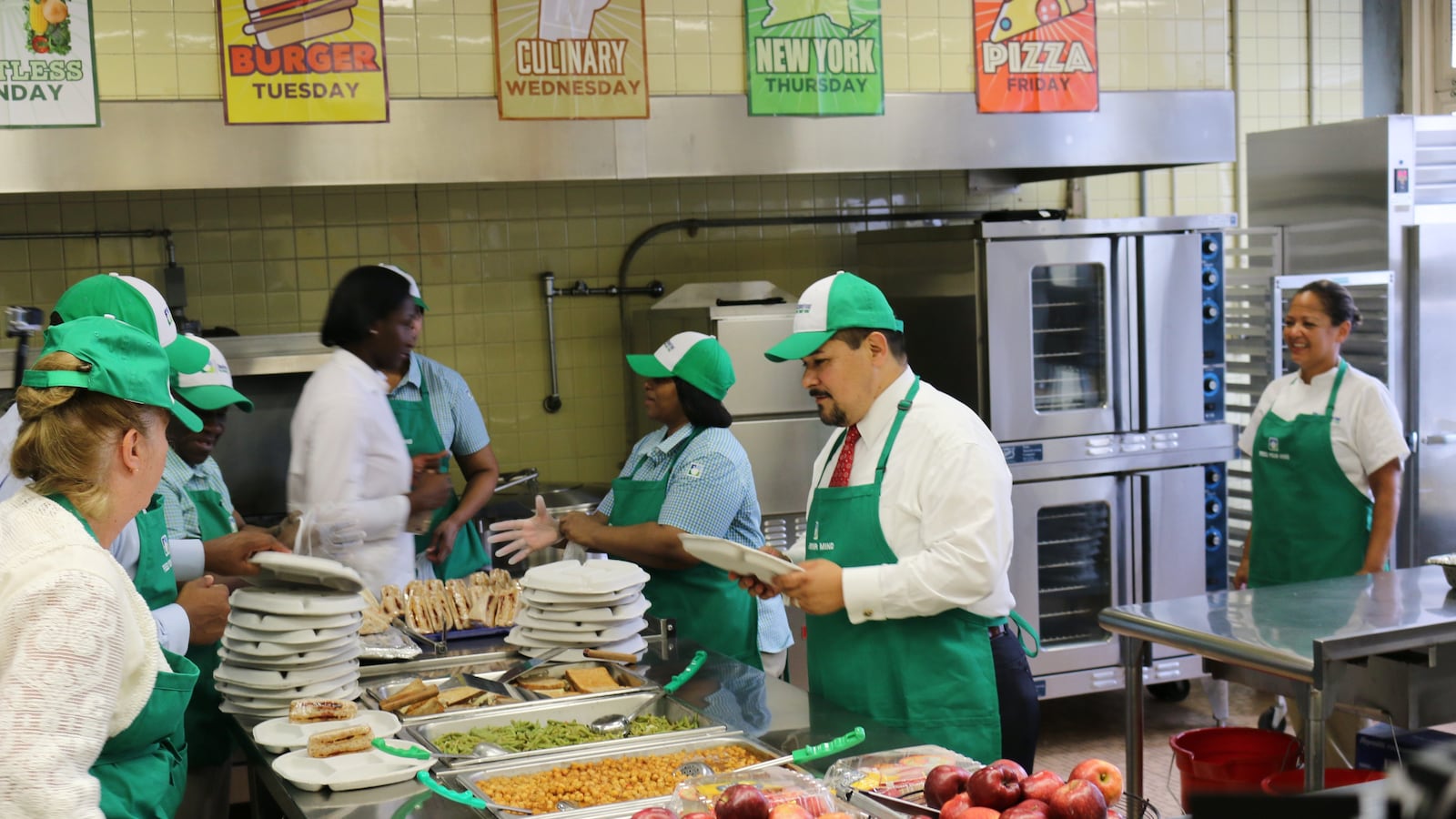The historic partial government shutdown could soon threaten New York City’s school food program, which serves about a million students breakfast and lunch.
Mayor Bill de Blasio said the city is drafting plans to keep school cafeterias open if the shutdown drags on, calling food for children “the number one thing we’re going to try to address.”
“In terms of drawing on some of our reserves, that would be a priority,” he said Thursday at a press conference to discuss the impact of the longest-ever shutdown.
The federal government provides about $43 million a month to pay for school meals in New York City, and right now the city has money on hand that would last until April.
School food is lifeline for many families. About 75 percent of New York City students qualify for free or reduced price lunch — to meet that threshold, a family of three would earn about $33,000 a year, said Liz Accles, executive director of Community Food Advocates, an organization that fought to make school lunch free for all city students.
“The real threat of [the meal programs] not being available lays bare some very real suffering,” Accles said. “The impact is pretty scary to think about.”
Other school districts are already beginning to feel the effects. One North Carolina school district recently announced it would scale-down its school lunches, cutting back on fresh produce and ice cream. Meanwhile, in Tennessee, one school district is hoping to recruit furloughed workers to fill in as substitute teachers.
The shutdown has dragged into its fourth week with no resolution in sight. President Trump and Congress are at an impasse over the president’s request for $5 billion to build a wall along the U.S.-Mexico border.
De Blasio’s media availability about the shutdown’s impact comes as he appears to be trying to bolster his national reputation. His State of the City speech last week focused on larger issues of income inequality and was followed up by appearances on CNN and “The View.”
De Blasio said it’s unclear whether the city would be eligible for reimbursement if it taps its own money to fund school food programs. And he warned that it would be impossible for the city to make up for all of the federal spending on programs that help poor families, which totals about $500 million a month.
“It is a dire situation, there is no other way to say it,” de Blasio said. “It will overwhelm us quickly.”
There are other ways the shutdown could be felt by students in the country’s largest school system, with funding for rental assistance and food benefits also in the balance. New York City is already struggling with a crisis in student homelessness: More than 100,000 lack permanent housing. Payments for food assistance are expected to stop in March, de Blasio said. An estimated 535,000 children under 18 years old benefit from that program.
Such out-of-school factors can have profound effects on student achievement. Cash benefits and food stamps have been linked to boosts in learning and students’ likelihood to stay in school. In New York City, the average family receives $230 in food assistance a month, according to city figures.
“The stress that the families are under, worrying about work and when they’re going to get paid, the children sense it. They hear it. They feel it,” said Mark Cannizzaro, president of the union that represents school administrators. “We see the impacts of that.”

